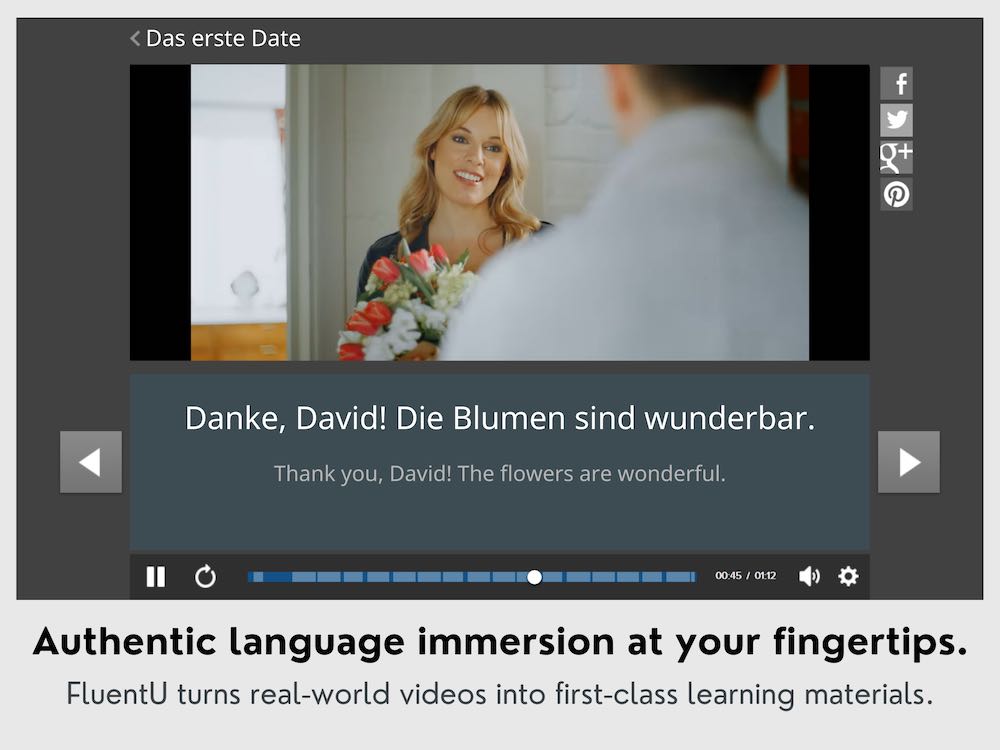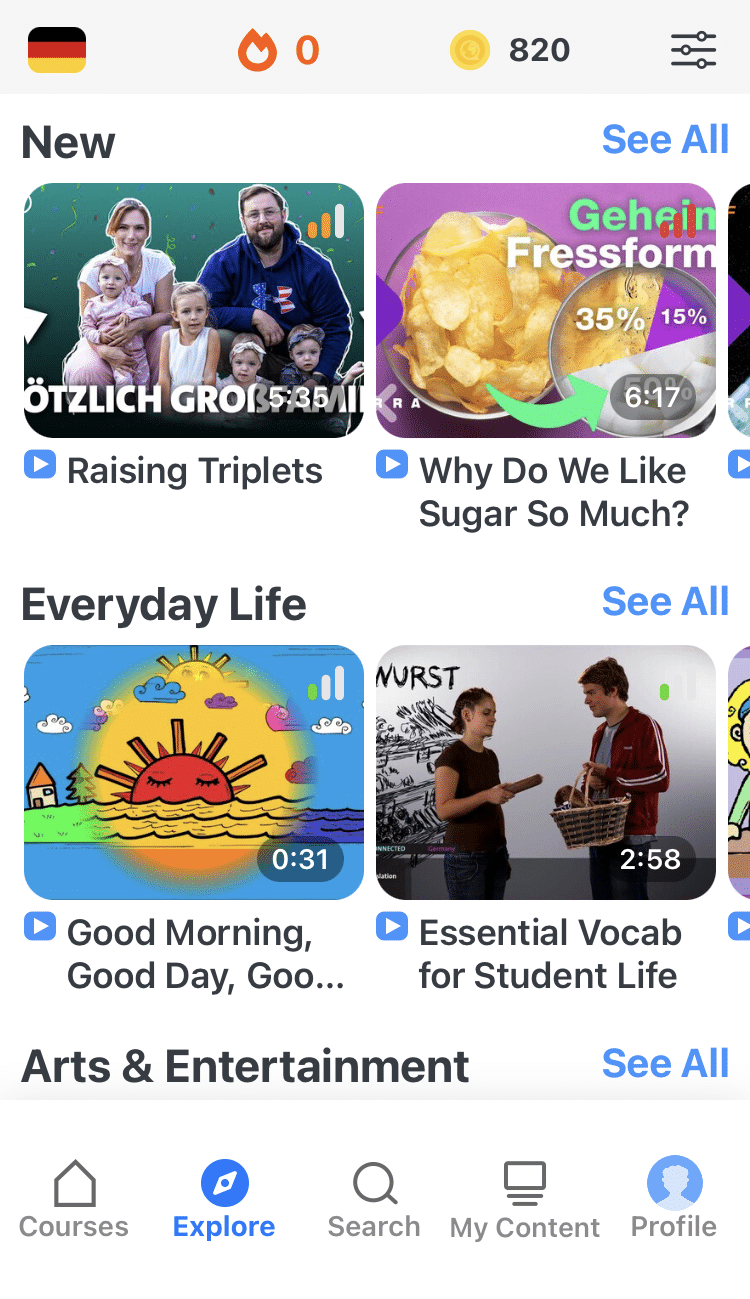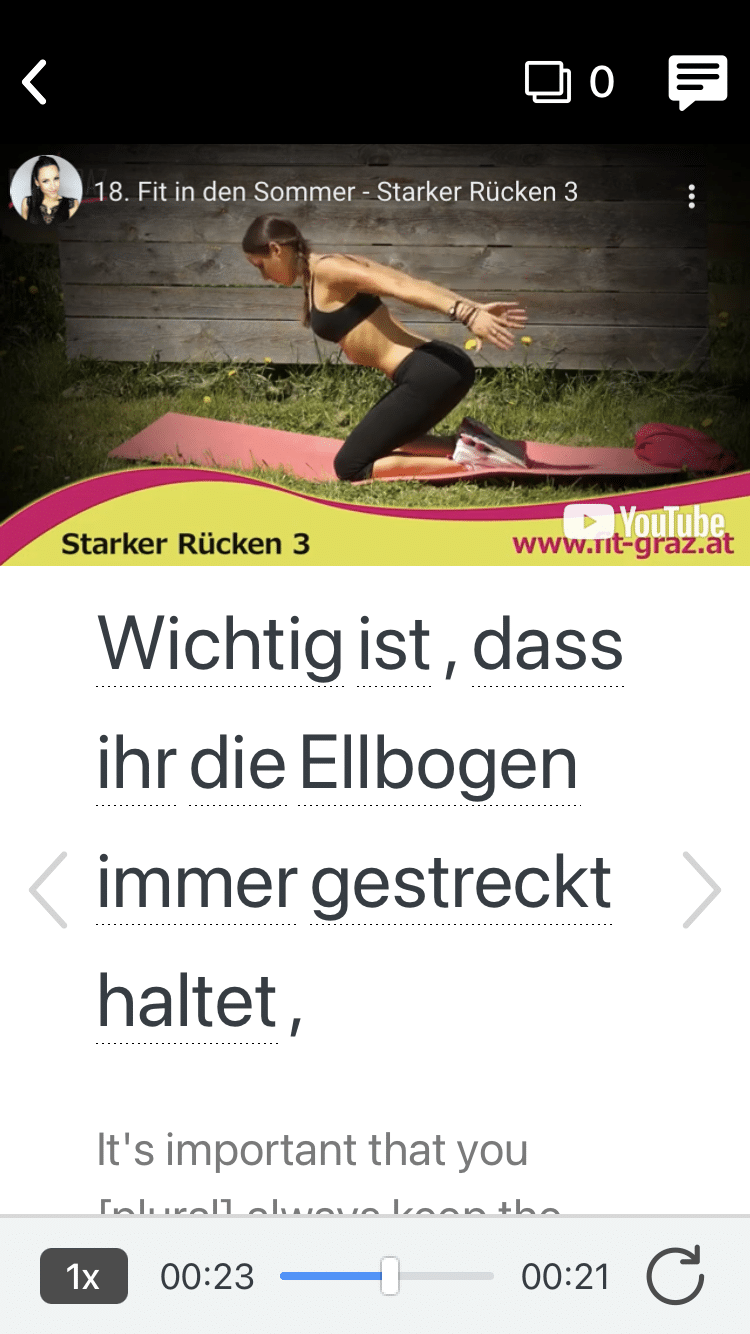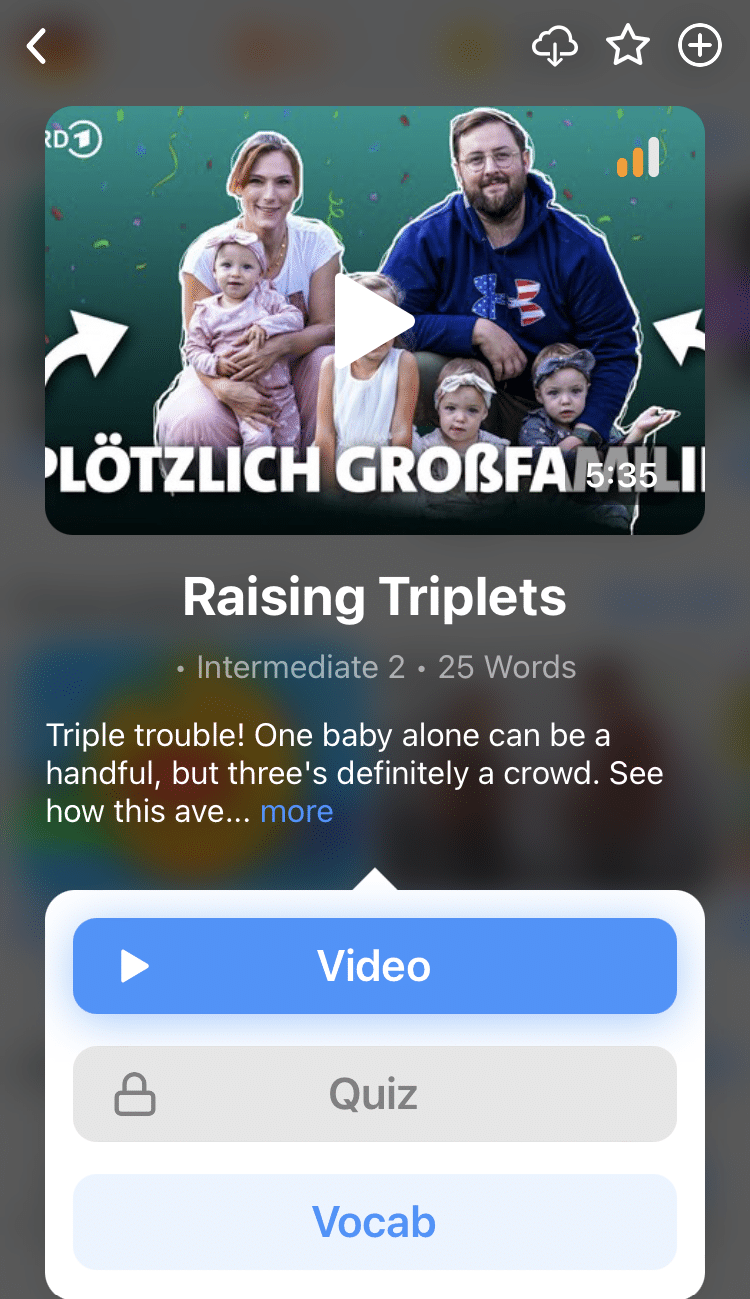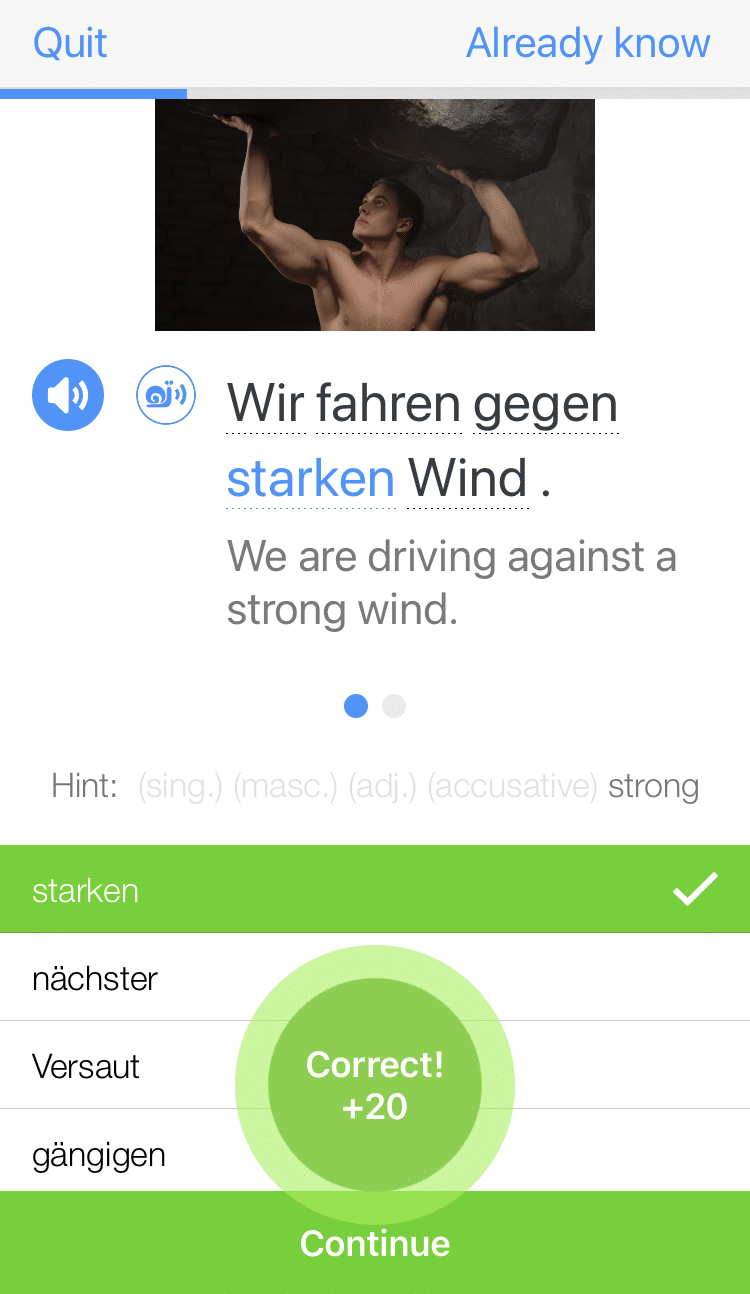
Plural Nouns in German
Can you imagine a world without plurals?
We’d never be able to talk about anything unless it was on its own!
So make sure you know how to use these precious plurals in German, too. You know, to order food for you and your friend or for when you want to watch two movies in one night.
To get you there, this post will guide you through five ways to build German plurals, with plenty of examples to help.
Contents
Download: This blog post is available as a convenient and portable PDF that you can take anywhere. Click here to get a copy. (Download)
How to Form German Plurals
In English, we have it easy. We usually only need to add an “s” on to the end of nouns to create plurals: “dog” becomes “dogs” and “tree” becomes “trees.”
In German, things are a little more complex. There are five different ways to create a plural noun.
There is one golden rule to remember when building your plurals, however: Plural nouns always use die as their definite article. You’ll notice this when looking over all the examples in this post!
First, though, here are the main rules in chart form:
| Which nouns? | Rule applied | Singular forms | Plural forms |
|---|---|---|---|
| masculine nouns with the endings -eur, -ich, -ier, -ig, -ling, -ör and many single-syllable feminine nouns | add -e | der/die Hund (the dog) der König (the king) | die Hunde (the dogs) the Könige (the kings) |
| many single-syllable neuter nouns, feminine nouns never form the plural with -r/-er | add -r/-er | das Wort (the word) | die Wörter (the words) |
| masculine nouns with the endings -e, -ent, and, -ant, -ist, -or, feminine nouns with the endings -e, -in, -ion, -ik, -heit, -keit, -schaft, -tät, -ung and the endings -ma, -um, -us in foreign words are usually replaced by -en | add -n/-en | der Student (the student) die Nation (the nation) | die Studenten (the students) die Nationen (the nations) |
| masculine, feminine, and neuter nouns with the endings -a, -i, -o, -u, -y and family names | add -s | Auto (car) Weber (family name) | die Autos (the cars) die Webers (the Webers) |
| masculine nouns with the endings -el, -en, -er and neuter nouns with the endings -chen, -lein | keep the same | der Löffel (the spoon) das Mädchen (the girl) | die Löffel (spoon) die Mädchen (girls) |
1. Add an -e ending
This is the most common way to form a plural—simply add an -e to the end of the word, much like how we add an “s” in English! 89% of masculine nouns and 75% of feminine nouns take this form.
All masculine nouns with the endings -eur, -ich, -ier, -ig, -ling, -ör take this -e plural ending.
der Käfig → die Käfige (the cage →the cages)
Many single-syllable feminine nouns also take this ending.
die Hand →die Hande (the hand → the hands)
Feminine nouns and most masculine plural nouns need an umlaut.
der Koch → die Köche (the chef → the chefs)
der Hund → die Hunde (the dog → the dogs) [This masculine noun doesn’t need the umlaut]
die Gans → die Gänse (the goose → the geese)
Neuter plural nouns hardly ever add an umlaut.
das Pferd → die Pferde (the horse → the horses)
2. Add an -er ending
Many single-syllable neuter nouns take this ending.
das Haus → die Häuser (the house → the houses)
It also occurs in masculine nouns, but very rarely.
der Mund → die Münder (the mouth → the mouths)
- Don’t forget to add an umlaut to the stem word—this almost always occurs.
- Keep in mind that feminine nouns never take this ending.
3. Add an -n/en ending
Add this ending to masculine nouns with the endings -e, -ent, and, -ant, -ist, -or.
der Student → die Studenten (the student → the students)
das Auge → die Augen (the eye → the eyes)
der Name → die Namen (the name → the names)
die Lehre → die Lehren (the teacher → the teachers)
Add -en to feminine nouns with the endings -e, -in, -ion, -ik, -heit, -keit, -schaft, -tät, -ung
die Nation → die Nationen (the nation → the nations)
4. Add an -s ending
This plural ending applies to:
Words borrowed from English, Dutch or French
das Radio → die Radios (the radio → the radios)
Abbreviations
die CD → die CDs (the CD → the CDs)
Peoples’ names
der Julia → die Julias (Julia → the Julias)
Words that end in an unstressed vowel
das Kino → die Kinos (the cinema → the cinemas)
Note that you never need to add an extra umlaut to any of these plurals.
5. No change
Some nouns do not change when creating a plural.
der Onkel → die Onkel (uncle → uncles)
das Mädchen → die Mädchen (the girl → the girls)
How to Learn German Plurals
You could just sit down at your desk one day and try to learn German plurals drill style–that is, constantly repeating words until they just stick in your head—but that wouldn’t be very effective, and it would no doubt bore you to tears. So why not try one of these creative methods?
Listen for plurals in TV shows, music and movies. You’re watching German movies for listening practice right? And catching up on your favorite German TV shows? And let’s not forget pop music! While you’re watching, keep an ear out for any plurals and write them down.
FluentU takes authentic videos—like music videos, movie trailers, news and inspiring talks—and turns them into personalized language learning lessons.
You can try FluentU for free for 2 weeks. Check out the website or download the iOS app or Android app.
P.S. Click here to take advantage of our current sale! (Expires at the end of this month.)
Another way is to download online puzzles, games and quizzes. There are numerous websites out there that offer free resources for learning plurals (and most other grammar topics), many of which are fun quizzes and games. Some of my favorites are Funtrivia, Hello, Resolven and Babel. Most of these can be played online, but there are also some that you can download or print off. Why not invite your friends to play these games together? You can help each other out trying to nail the German plural!
You can also cover your room in plurals. Are you ready for your room to be redecorated? I know a way that’s cheap and will help your German. Write a noun and its plural down on large pieces of paper. Color them really brightly if you want. Then, stick a few of these sheets of paper on your walls—in fact, stick them anywhere you can. Maybe even in your bathroom! You’ll be seeing these all day as you go around your usual daily business. After they’ve been up for a week, test yourself to see if you can remember the noun’s plural. You’ll be surprised by how much unknowingly sinks in when you aren’t taking too much notice! Once you’ve remembered a plural, switch it for a new one.
So there we have it—no more need to worry about living in a world without German plurals!
Download: This blog post is available as a convenient and portable PDF that you can take anywhere. Click here to get a copy. (Download)
And One More Thing...
Want to know the key to learning German effectively?
It's using the right content and tools, like FluentU has to offer! Browse hundreds of videos, take endless quizzes and master the German language faster than you've ever imagine!
Watching a fun video, but having trouble understanding it? FluentU brings native videos within reach with interactive subtitles.
You can tap on any word to look it up instantly. Every definition has examples that have been written to help you understand how the word is used. If you see an interesting word you don't know, you can add it to a vocabulary list.
And FluentU isn't just for watching videos. It's a complete platform for learning. It's designed to effectively teach you all the vocabulary from any video. Swipe left or right to see more examples of the word you're on.
The best part is that FluentU keeps track of the vocabulary that you're learning, and gives you extra practice with difficult words. It'll even remind you when it’s time to review what you’ve learned.
Start using the FluentU website on your computer or tablet or, better yet, download the FluentU app from the iTunes or Google Play store. Click here to take advantage of our current sale! (Expires at the end of this month.)
